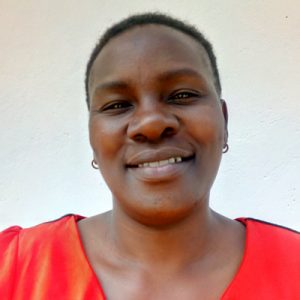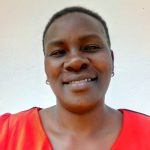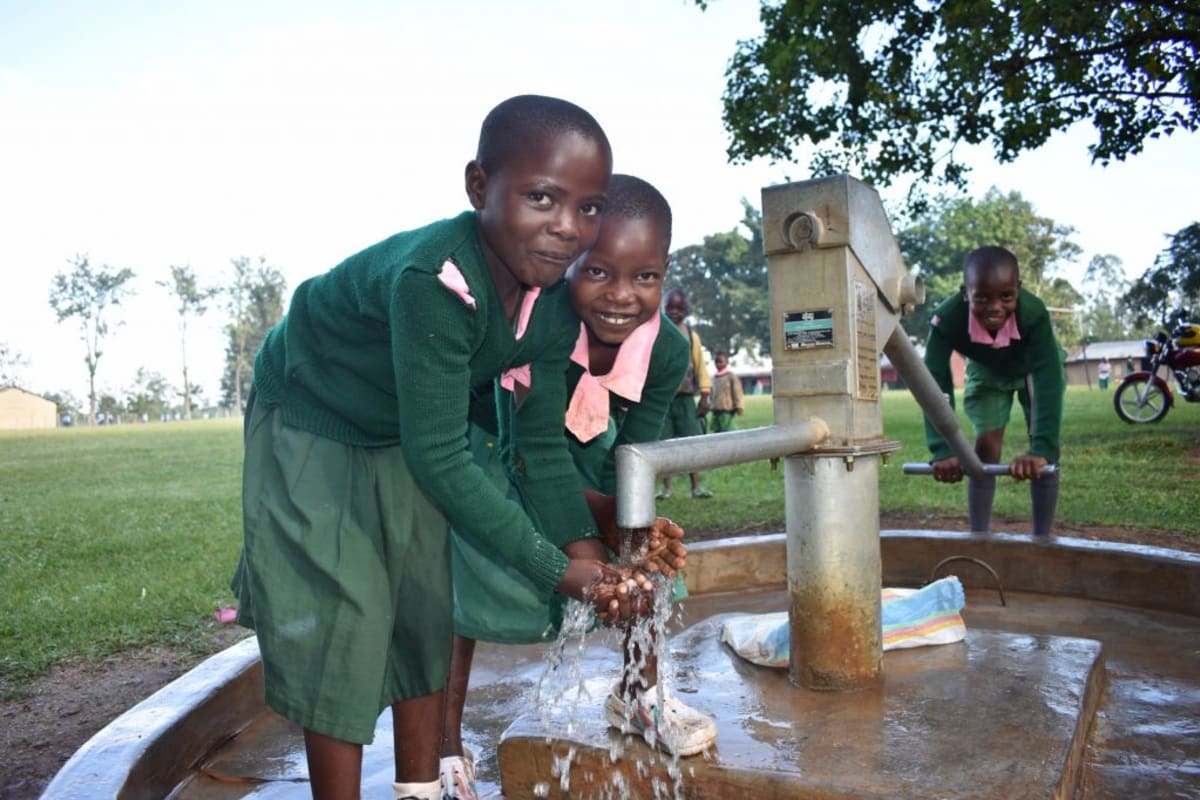There is no on-campus water source for the 942 students and 20 teachers and staff at Khaimba Primary School. In the face of their severe water crisis, the school requires students to carry water from home to school every morning. But the students are also carrying their books, and the water is an added burden on their walk. As a result, the school struggles to provide a clean environment for its pupils.
Without a central storage container on campus, students are sent back out during lunchtime and sometimes during classes to fetch water again when their morning water runs out. To do so, students typically either return home or go to a spring in the community. But there are increasing conflicts between the school and the community members who use the spring, with farmers accusing the students of snacking on their sugarcane along the path to the spring. At the time of our last visit, the community had placed an indefinite ban on the school children using the spring.
The next-door secondary school has also banned the primary school from using their well, saying that the primary school students overrun the secondary students in their need for water.
With so many students, teachers are not able to track exactly where each pupil collects their water. Some students opt for sources they know are unsafe just because they are on the walk to school, helping to ease their morning walk and help them get to school on time. Because students' water is combined for use at school, even one contaminated source can mean the entire school is at risk of water-related illnesses. Stomachaches, amoeba, and fatigue are the most commonly reported conditions among students.
"When I come to school, I cannot use the water from school. I don't trust it, so I carry my own. Sometimes, when we need water for practical lessons, we cannot use water. School meals are also delayed due to the search for water," explained teacher Dorcas Wanyama.
Absenteeism is a major problem at Khaimba, caused both by students' fear of showing up at school without water and from their contraction of water-related illnesses. Sometimes students will not return to class when they are sent out to fetch more water during the day, too tired and downtrodden from the routine.
"It's heavy to carry, and I waste time every morning. When the water is finished, we have to go back home for more water," said student Nesbit.
What We Can Do:
New Well
We conducted a hydrogeological survey at this school, and the results indicated the water table beneath it is an ideal candidate for a borehole well. Due to a borehole well's unique ability to tap into a safe, year-round water column, it will be poised to serve all of the water needs for this school's large population, even through the dry season.
The school will help collect the needed construction materials such as sand, rocks, and water for mixing cement. They will also provide housing and meals for the work team, in addition to providing local laborers. We will complement their materials by providing an expert team of artisans and drilling professionals, tools, hardware, and hand-pump. Once finished, the school’s students and staff will use water from the well and staff for drinking, handwashing, cooking, cleaning, and much more.
The school and we strongly believe that all of these components will work together to improve standards at this school, which will help lead to better student academic performance and unlock the opportunity for these students to live better, healthier lives.
Handwashing Stations
The student health club will oversee two new handwashing stations we will provide and ensure they are kept clean and in working condition. The club leaders will fill the handwashing stations with water daily and make sure they are always supplied with a cleaning agent such as soap or ash.
VIP Latrines
Two triple-door latrine blocks will be constructed with local materials that the school will help gather. Three doors will serve the girls, and three doors will serve the boys. These new latrines will have cement floors designed to be easy to use and clean. And with a rain tank right on school property, there should be enough water to keep them clean.
Training on Health, Hygiene, COVID-19, and More
We will hold a one-day intensive training session with students, teachers, and parents. This training will cover a wide range of topics, including COVID-19 symptoms, transmission routes and prevention; personal and environmental hygiene; and the operation and maintenance of the rain tank, latrines, and handwashing stations. There will be a special emphasis on handwashing.
Our team of facilitators will use various methods to train, including participatory hygiene and sanitation transformation and asset-based community development. We will initiate a student health club, which will prepare students to lead other pupils into healthy habits at school and home. We will also lead lectures, group discussions and provide illustrative handouts to teach health topics and promote good hygiene practices within the school, including handwashing and water treatment. We will then conduct a series of follow-up training before transitioning to our regularly scheduled support visits throughout the year.



 Rehabilitation Project
Rehabilitation Project







































